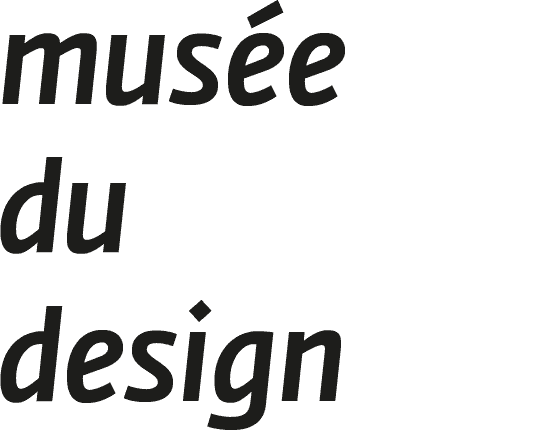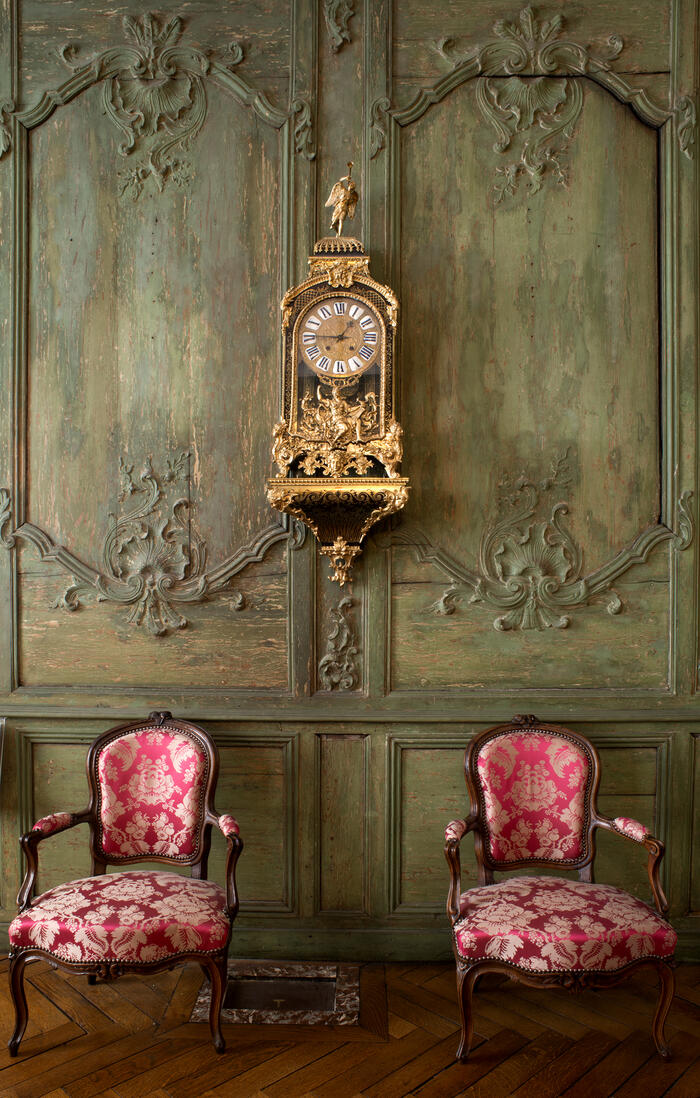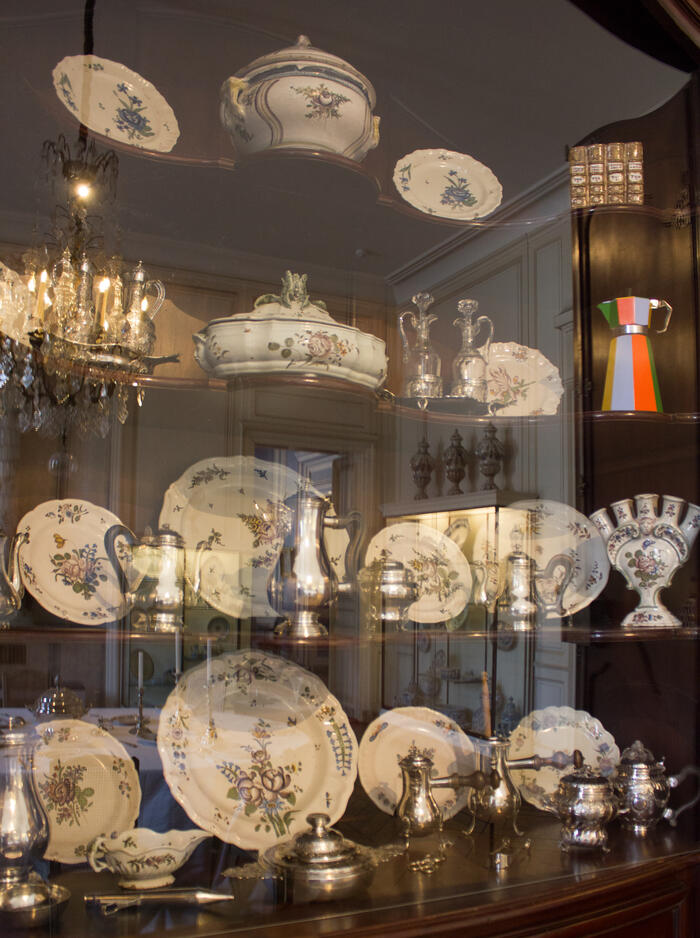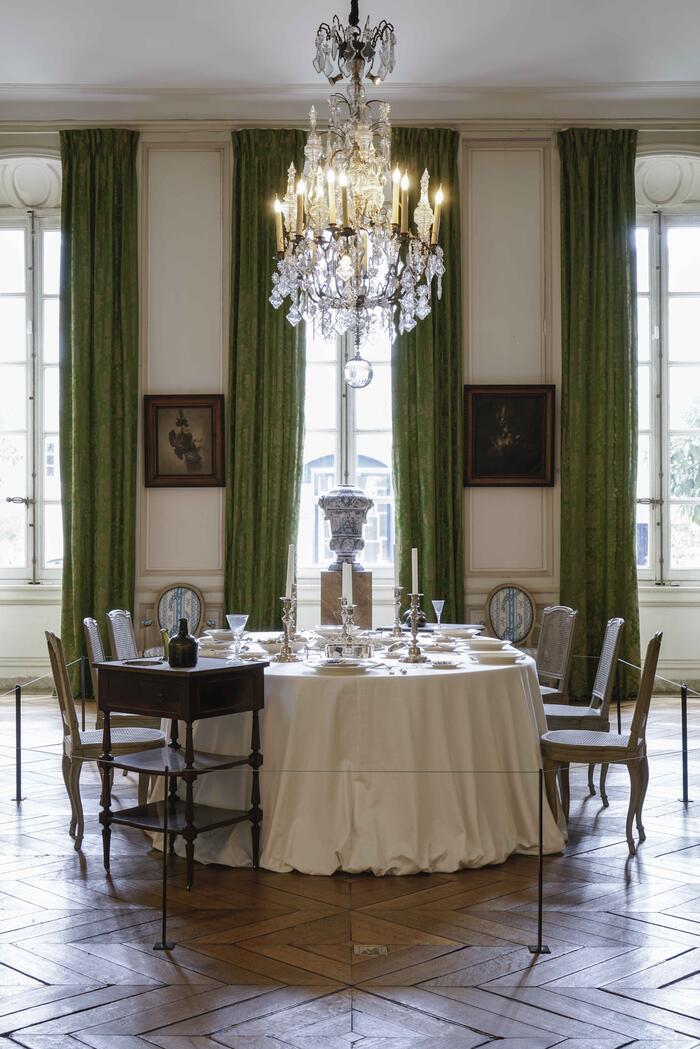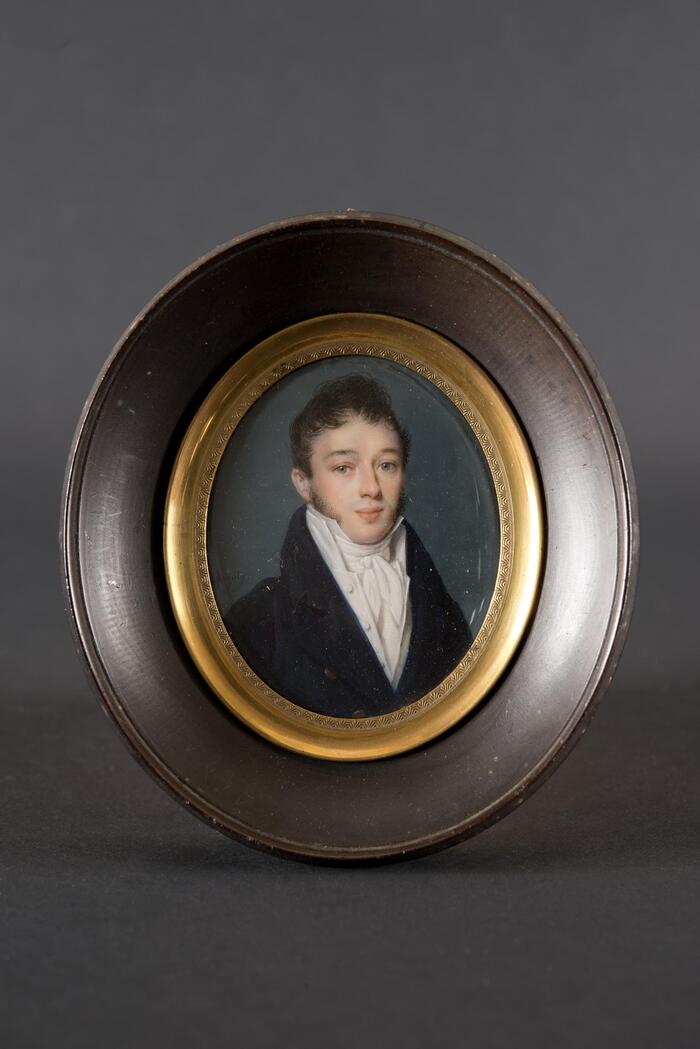The 17th and 18th century collections
Housed in a private mansion built in 1775-1779 for the parliamentary councillor Pierre de Raymond de Lalande, the Museum of Decorative Arts and Design aims to evoke the atmosphere of a Bordeaux home during the Enlightenment. It presents local productions of great quality: port furniture, earthenware by Jacques Hustin or porcelain from the Terres de Bordes factory, rich goldsmith's vessels with hallmarks by Jean-François Jouet, Gabriel Tillet, Guillaume David and many other goldsmiths, paintings by Beautiran, miniatures painted by Pierre-Edouard Dagoty and ironwork from Bordeaux decorate the house.
However, the madd-bordeaux collections are not limited to works from Bordeaux. They also include a particularly rich collection of Parisian furniture, including a reading table attributed to Pierre IV Migeon, a sideboard stamped Jean-Ferdinand Schwerdfeger, and seats and a bed by Louis-Magdelaine Pluvinet. They also include a few masterpieces of sculpture, such as the remarkable Sèvres biscuit representing the young Duke of Bordeaux in life size, and a posthumous bust portrait of Montesquieu, a superb representation au naturel signed by Jean-Baptiste Lemoyne. They also offer a wide panorama of French and foreign ceramic production (from Rouen to Marseille, from Toulouse to Strasbourg, via Delft and the Compagnie des Indes), as well as European ceremonial glassware. The museum also holds numerous objects reminiscent of the pleasures and leisure activities fashionable in the 18th century: a fine collection of musical instruments (an Austro-Venetian viol with mythological decoration, a Parisian harp with Chinese decoration, a Marseille spinet with revolutionary decoration and two Bordeaux fortepianos, as well as a square piano, signed Pleyel and dated 1816), a set of scientific instruments (clocks, barometers, compasses, etc.), as well as numerous musical accessories. ), as well as numerous toiletries (fans, jewellery, shoe buckles, chatelaines, salt flasks, sewing and writing sets, etc.). This domestic atmosphere would not be complete without paintings and graphic arts to brighten up the walls, including two pastel portraits by Jean-Baptiste Perronneau and several portraits of Bordeaux merchants painted by Adolf-Ulrik Wertmüller.
Some of the works also evoke the major urban planning work carried out in Bordeaux in the 18th century. The reduction of the equestrian statue of Louis XV cast by Jean-Baptiste Lemoyne for the Place de la Bourse (1766) and the seven plaster reductions of the mythological statues made by Pierre-François Berruer for the Grand-Théâtre de Bordeaux (1780) bear witness to two major projects carried out in the Guiana capital during the Enlightenment.
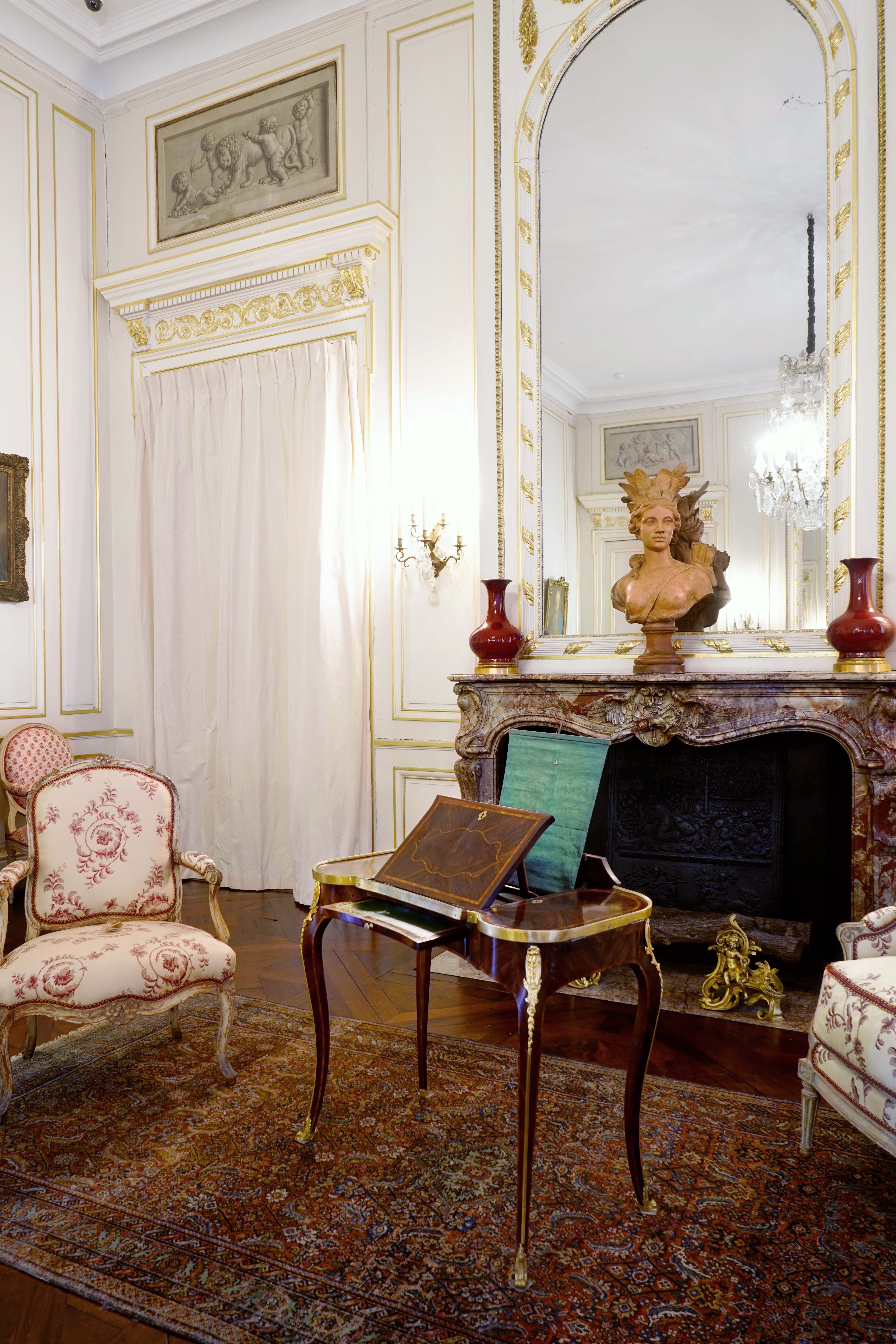
Gift of the Association of the Friends of the Hôtel de Lalande, 2006
This unstamped reading table is attributed to Pierre IV Migeon (1696-1758), a famous representative of a great dynasty of Parisian cabinetmakers. Indeed, its shape, known as a kidney because it evokes the silhouette of a kidney, the work of the veneers in curling, and especially the pattern of the gilded bronze falls that protect the edges of the legs are characteristic of his production.
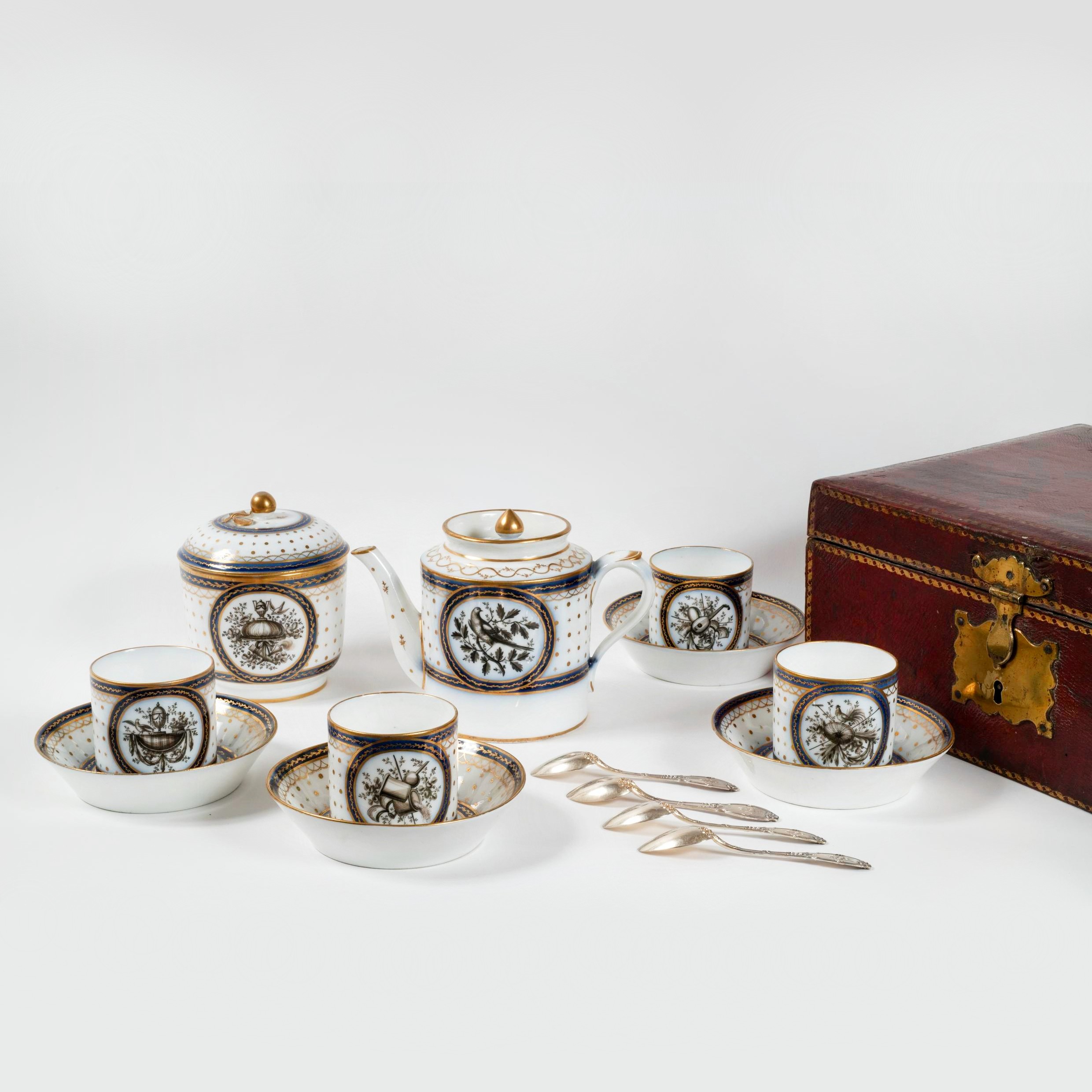
Bordeaux, Terres de Bordes factory
The spoons date from the 19th century.
Gift of the Association des Amis du madd-bordeaux

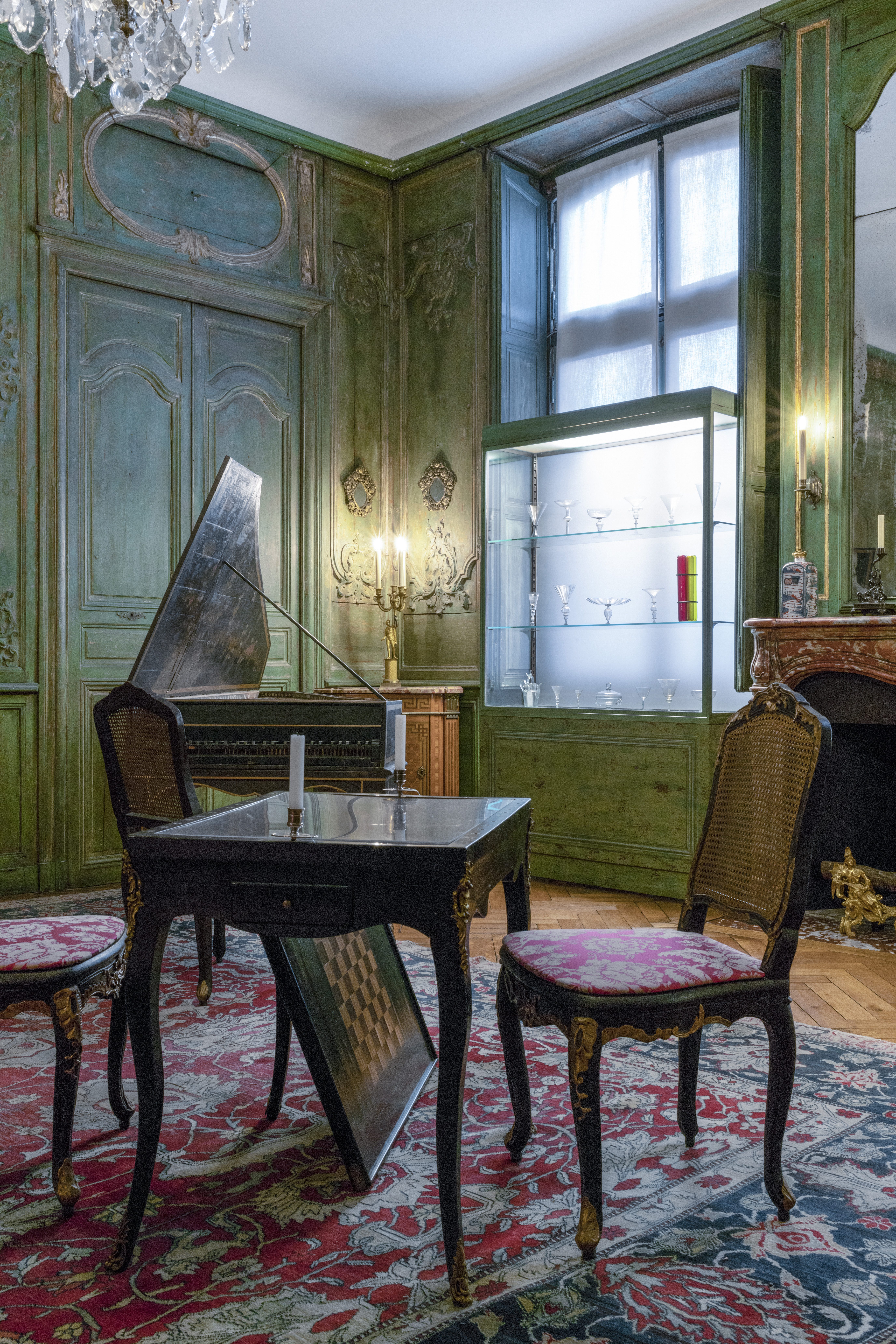
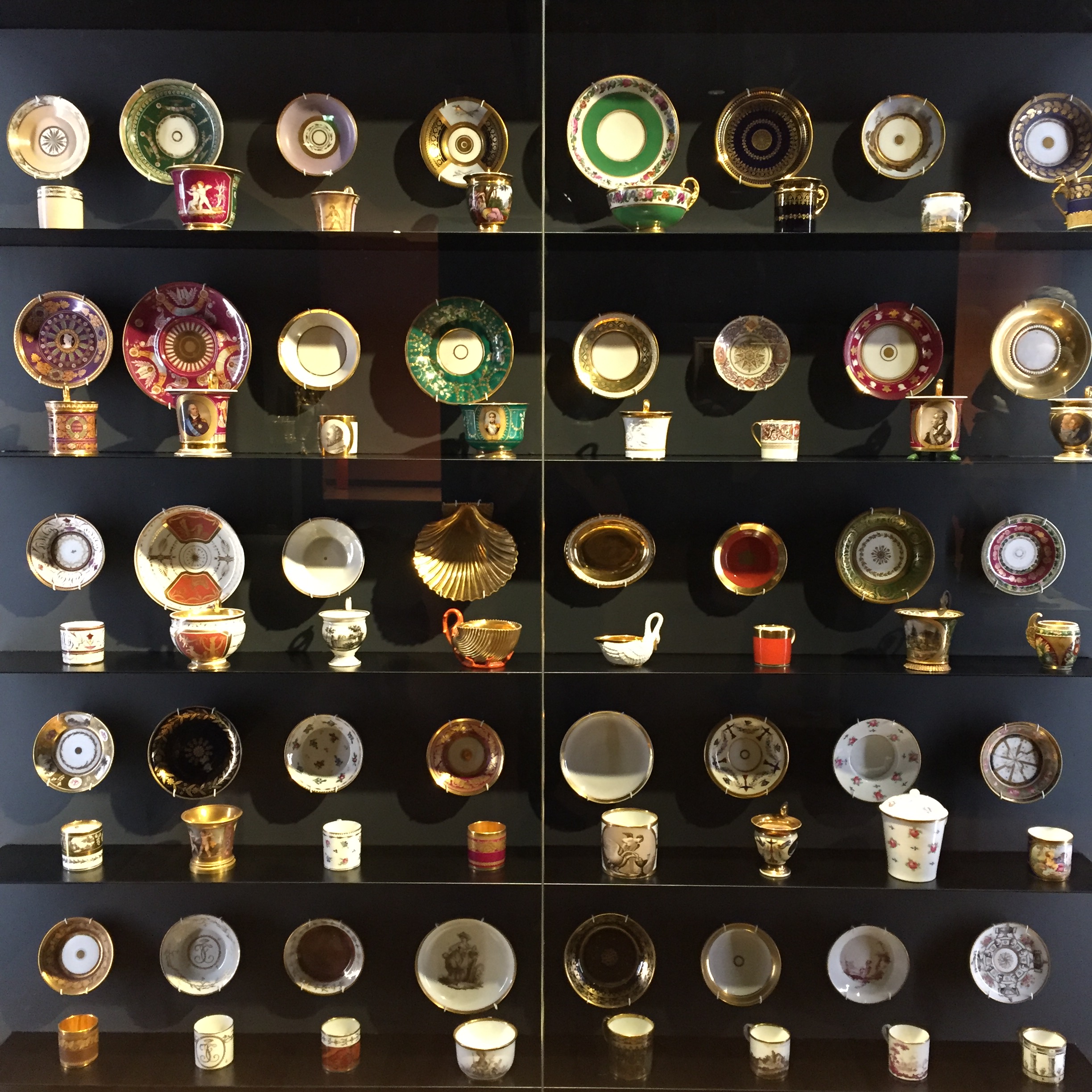
Sèvres Porcelain Manufactory
Queen's Manufactory
Manufacture du Duc d'Angoulême
Manufacture Nast Frères
Manufacture Dagoty
Manufacture Bringeon
Manufacture Lebon-Halley
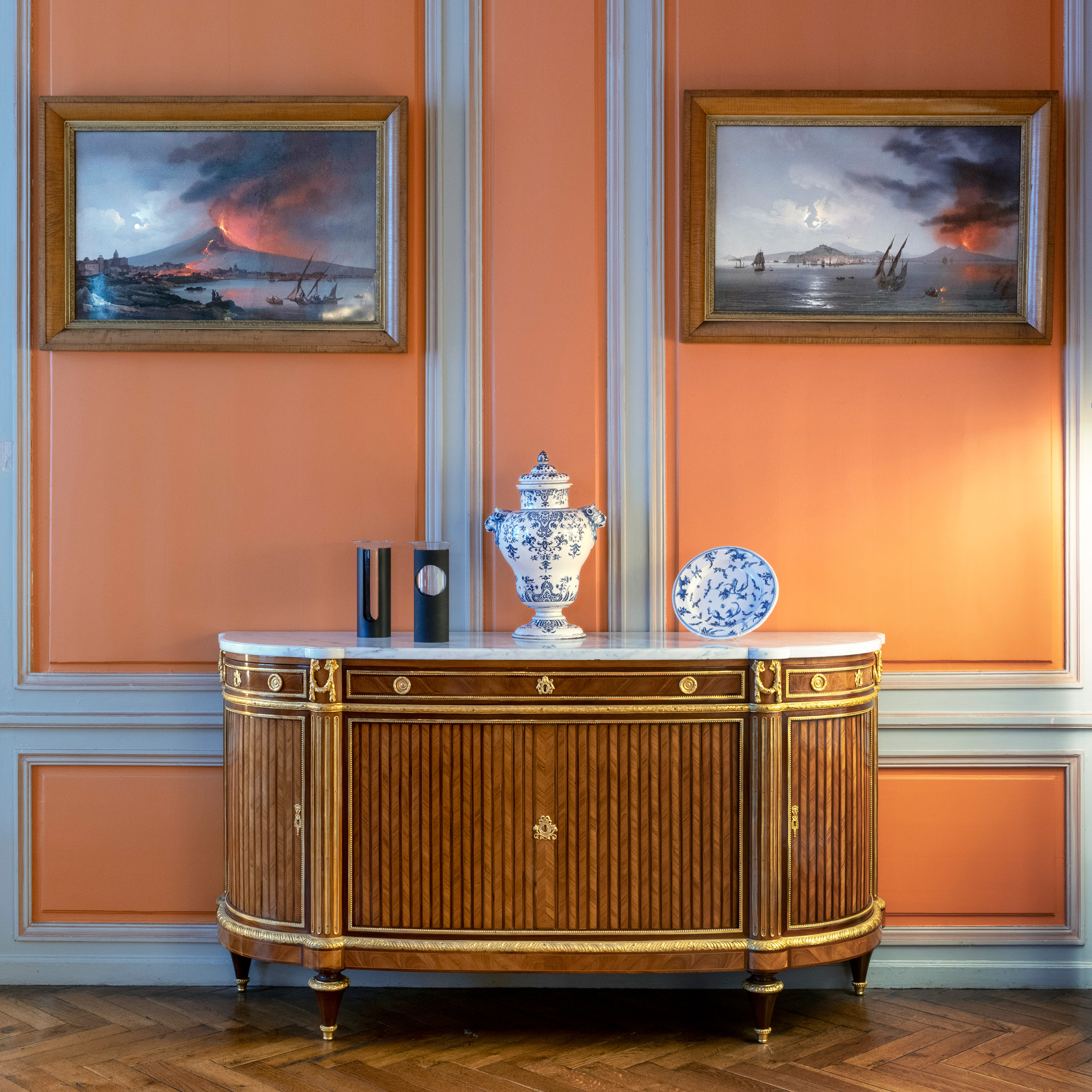
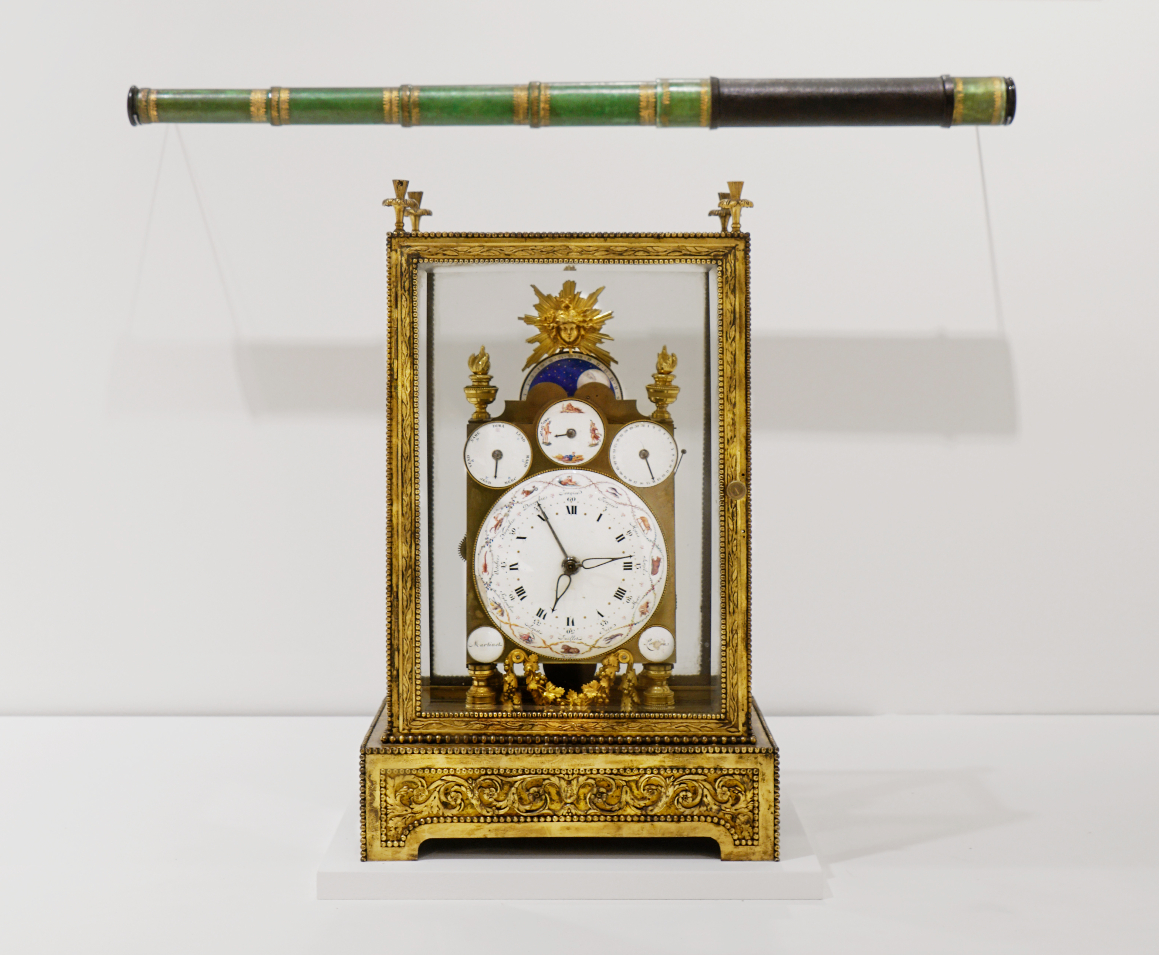
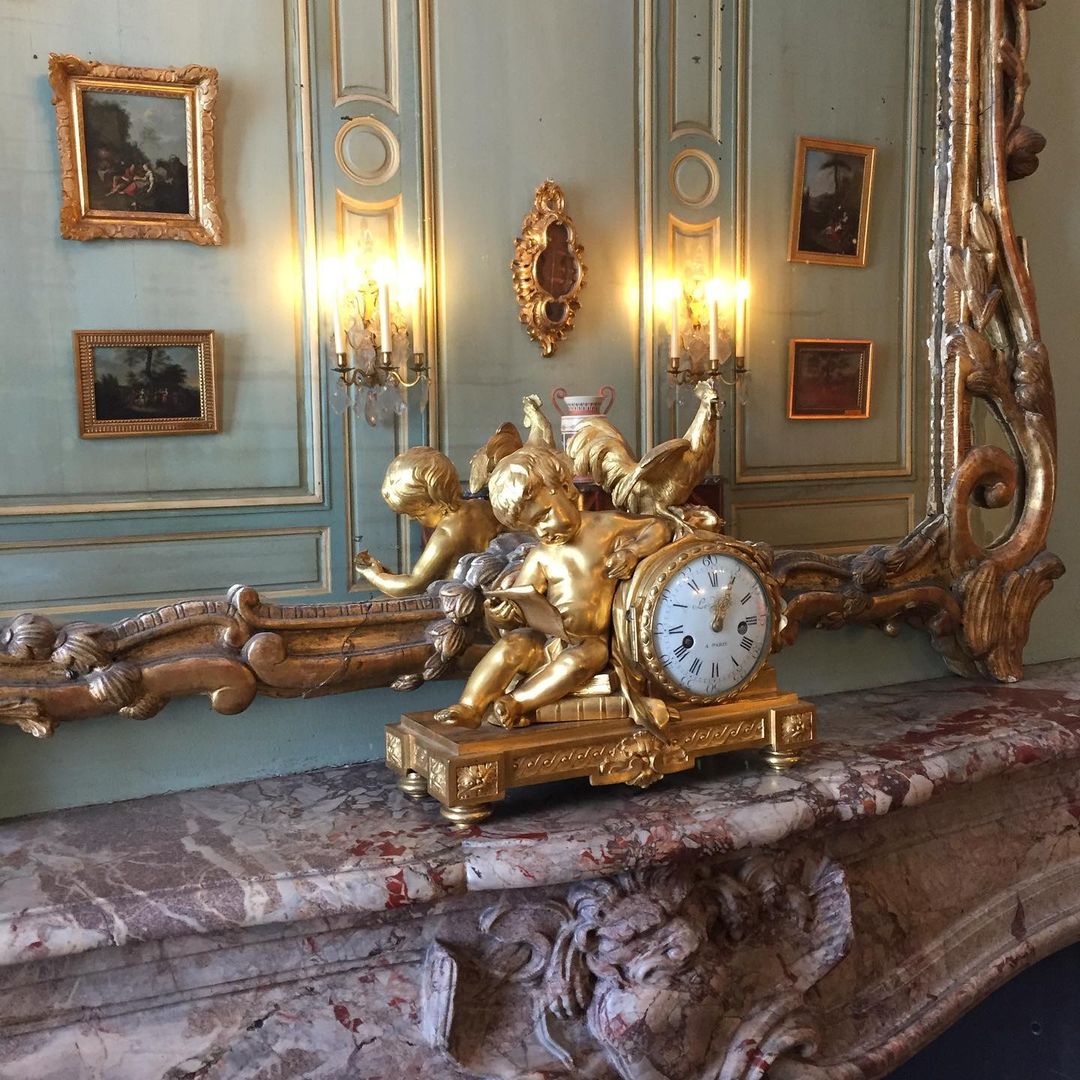
Bequest from Pierre de Giovetti, 1985


